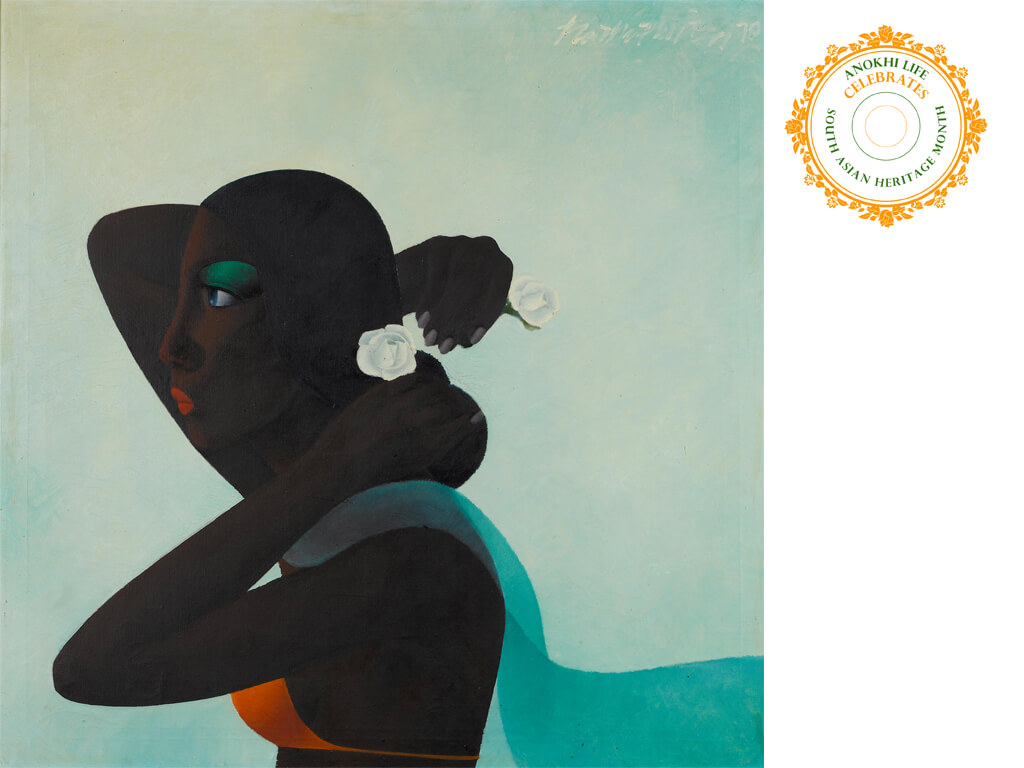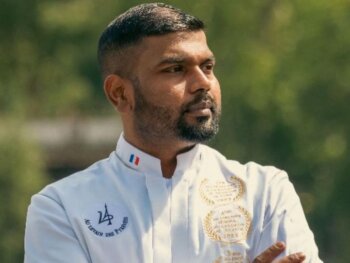We continue our four-part series honouring South Asian Heritage Month by taking a look at the modern art movement from India, Sri Lanka, Bangladesh and Pakistan. These pioneers of modern art have charted a trajectory for South Asian art that puts it high on the global scale of recognition. With nationally renowned art historian and curator Ali Adil Khan, we now take a look at art history of Pakistan by looking at 4 pioneering modern artists who you should know.
*Click here to see our Art History Of India: 4 Pioneering Modern Artists You Should Know*
*Click here to see our Art History Of Bangladesh: 4 Pioneering Modern Artists You Should Know*
South Asia forms an inverted triangle extending from the heights of the Himalayas to the depths of the Indian Ocean. Stretching 2,000 miles from north to south, and east to west, it is home to almost one-fourth of the World’s population and an ancient and diverse group of people, that speak different languages, practice varied religions and come from rich backgrounds and cultures. Therefor, it is no surprise that the modern and contemporary art originating from South Asia is a vibrant milieu of diversity, spirituality and tradition.
In contrast to the political history of Pakistan, which has been somewhat checkered, the history of modern art has been impressive and subversive – shaped by the political, social and religious circumstances. Both, the modern and contemporary artists of Pakistan have produced strong works that are metaphoric, critical and extremely thought provoking. The interesting part of these artists and their work is that, by merely looking at their paintings one cannot ascertain that they may have originated from South Asia. The strength and depth of their work is no less than that of the Western modern masters.
Zubeida Agha (1922–1997)
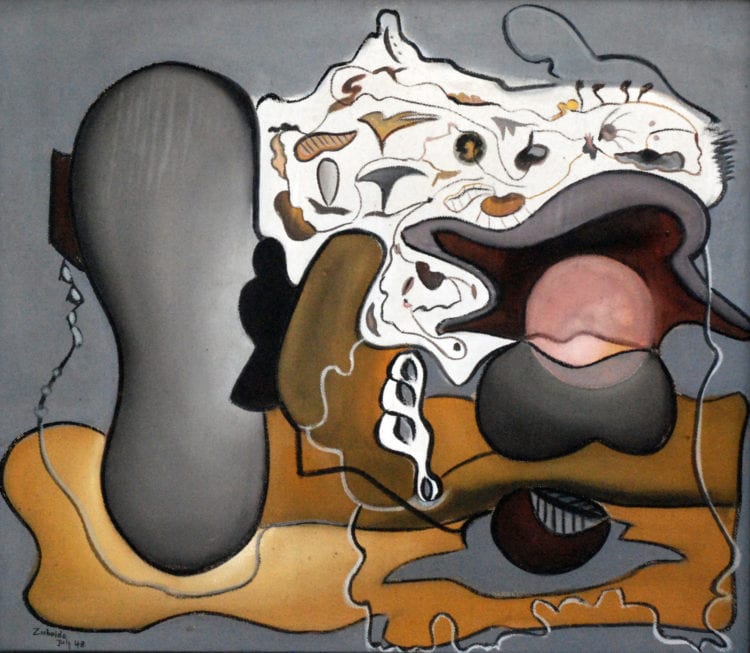
Zubeida Agha (1922–1997) was the first artist to hold an exhibition of her paintings in 1949 following the creation of Pakistan. She helped introduce the modern idiom to Pakistan very early on, which set a strong foundation for others to build on. As the pioneer of modern and abstract painting in Pakistan, Agha found herself compelled to use a language unique to her environment and liking, breaking the traditions inherited from pre and post-colonial India.
Futuristic and mainly abstract, her oeuvre was radical and ahead of its time. Inspired by a deliberate intellectual and emotional discipline, one could even go as far as to say that she was Pakistan’s earliest conceptual artist. Agha was taught and mentored by the Indian master B.C. Sanyal, Mario Perlingieri (Lahore-based Italian prisoner of war who was a student of Picasso) and Charles Fabri the curator of Lahore Museum. It was under their tutelage that she learned to paint ideas instead of objects, breaking free from academic painting.
By simplifying her style, her works ended up looking misleadingly easy, an essential part of the innate charm of her work. She faced severe art criticism and very few people understood and appreciated the intricacy of her expression until much later. In 1950, Agha went on to study on a scholarship at the Saint Martin’s School of Art in London where she exhibited her works in 1951 and received critical acclaim. She then joined the École des Beaux-Arts in Paris and held a solo exhibition in Paris in 1952. A year later, Agha returned to Pakistan and continued to live and exhibit her works in Karachi, Lahore and Islamabad. She’s credited for having the vision for opening the Contemporary Art Gallery in 1961 in Rawalpindi and ran it for over 15 years as the Executive Director. During this period, she nurtured and supported emerging artists who later-on were recognized as modern-masters in their own right.
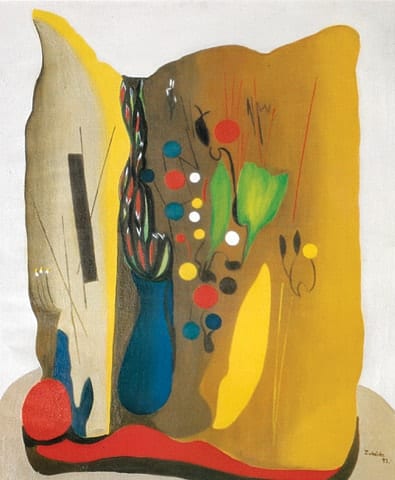
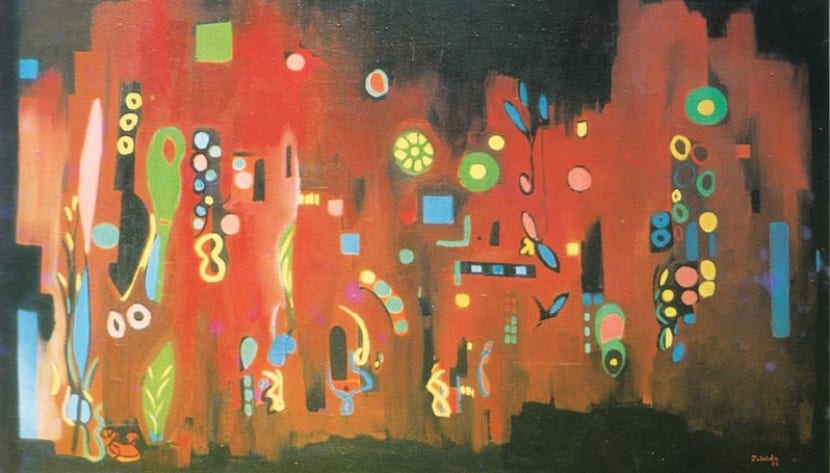
Syed Sadequain (1930-1987)
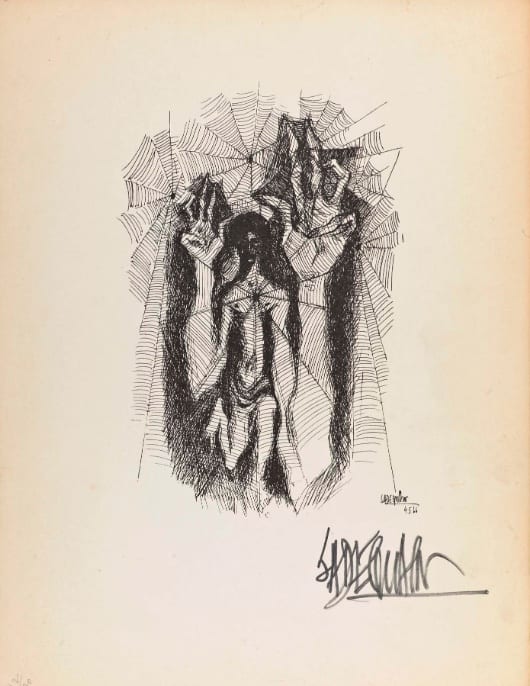
Syed Sadequain (1930-1987) was born in Amroha, India and soon after partition in 1947, migrated to Pakistan. Sadequain was highly prolific and a creative genius, who came from a long line of Quran scribes and was noted firstly for his calligraphy work. He is undoubtedly the most celebrated artist of Pakistan and one of South Asia’s greatest. His drawings are exquisite, and paintings thought provoking. He was a people’s artist and believed in making art that was accessible and understandable by the public, yet deep in its meaning and critical of hypocrisy, societal decay and decadence.
He painted large murals in public places, banks, libraries, universities, offices, auditoriums, and even the ceilings of museums and turbine halls of generating stations in Pakistan, India and France. While recovering from tuberculosis on the barren shores of Gadani (near Karachi), he closely observed the resilience of the wildly growing cactus plant, which he used as inspiration and metaphor for his paintings and line drawings. Sadequain was immensely talented and invented a style of his own that was unique and profound, and in 1961 received the Laureate Biennale (for “Artists Under 35”) by the International Jury of Critics at the 2nd Paris Biennale winning him a scholarship that allowed him to continue his artistic endeavours in Paris.
He stayed in Paris for the next several years, working on his exhibitions and commissions. One of the most important commissions were his lithographs for Albert Camus’ literary book L’Étranger (1966), which won him critical acclaim. These years were the most important for Sadequain in terms of his artistic development as he traveled across Europe and North America. In 1964, he won the hearts of the French media, comparing him to Picasso. After his return to Pakistan in 1968, he continued with his figurative work but also started working on his calligraphic compositions. He developed an inimitable style of writing verses from the Quran which also depicted the meaning and context behind them. Based on his achievements and recognition, both locally and globally, and the significant impact of his work, I rank Sadequain to be one of the most significant artists from South Asia of the 20th century. In 2007, the Royal Ontario Museum in Toronto acquired one of his paintings from the cobweb series for their permanent collection.
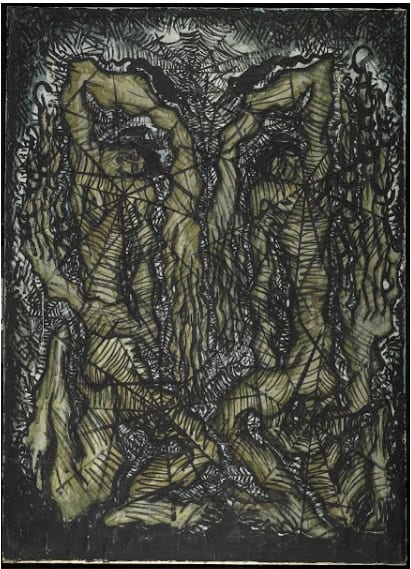
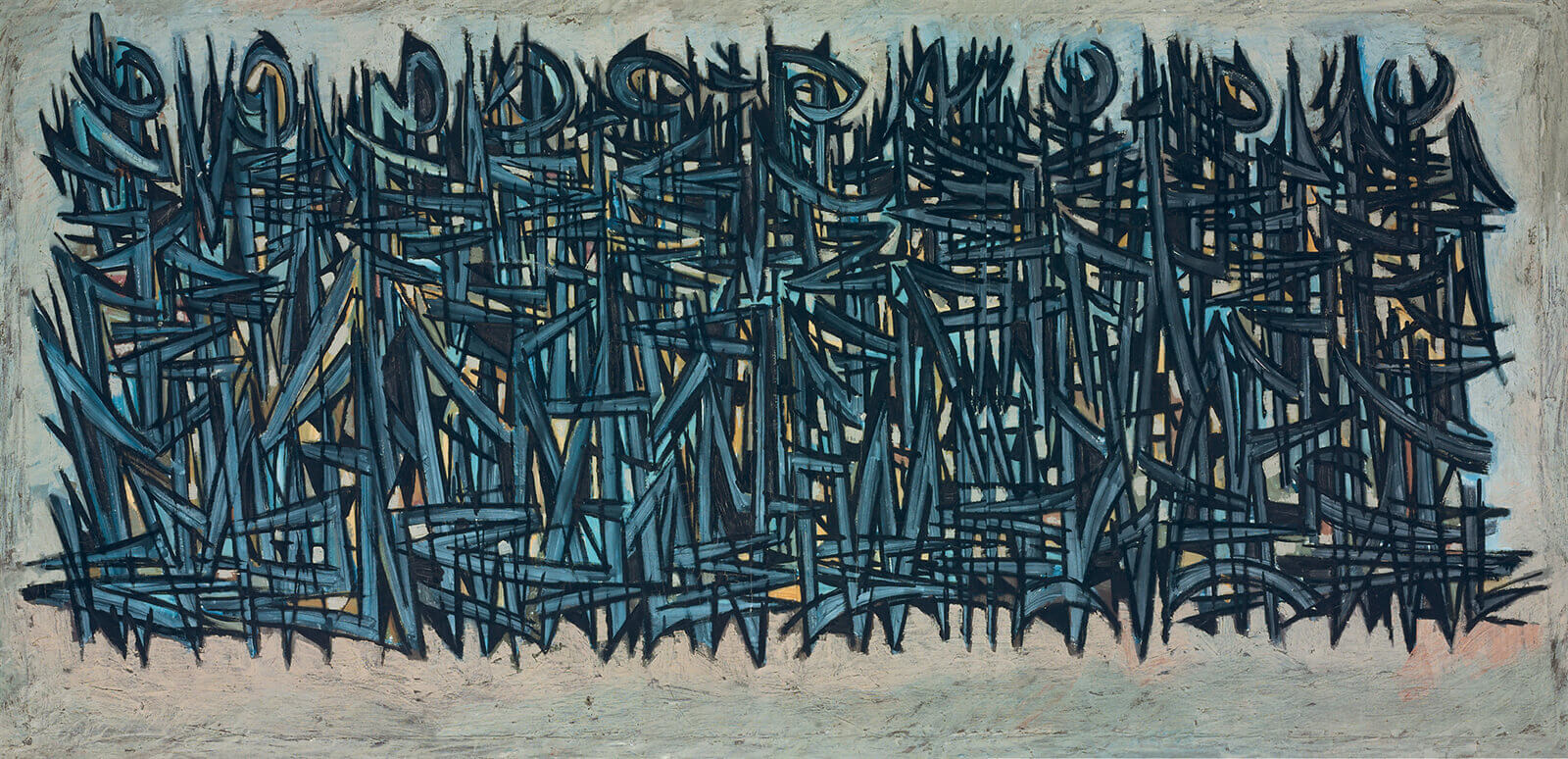
Bashir Mirza (1941-2000)
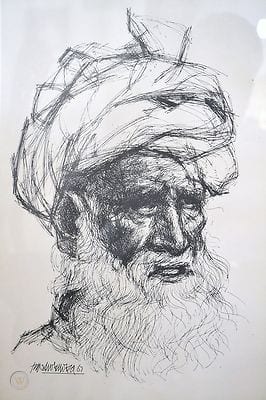
Bashir Mirza (1941-2000) also known as BM, was a fearless, forward-thinking Bohemian art figure in Pakistan. In 1967, he rose to fame with his “Portraits of Pakistan” pen and ink drawings. The portraits were executed to perfection and reflected the strength of his lines, as he captured the faces of the common man and woman from the villages and cities.
From 1969-71, Mirza spent time in Europe and travelled and exhibited across different cities in Germany. Upon return to Pakistan, he exhibited his avant-garde “Lonely Girls” series conceptualized in Germany which took Karachi by storm. These were bold and sensuous works painted with a lot of panache and strong Western sensibilities. BM continued with this series until the late ’70s and revived it again in late ’90s. Although he never stayed for long with one theme or style, fluctuating between realistic, abstract and non-objective styles.
In the late ’80s and early ’90s, BM created his “Sealed Lips” series, which was politically charged and created as a protest against certain ordinances passed and amendments made to the constitution by Pakistan’s military dictator Mohammed Zia-ul-Haq which limited human and women’s rights. BM had a flamboyant personality and hosted senior artists (including F.N. Souza, M.F. Husain and P. Mansaram), poets, actors, sports personalities (including then cricket-player and the future Prime Minister of Pakistan Imran Khan) and other political figures at his studio and exhibitions. Prime Minister Benazir Bhutto, the first female prime minister of Pakistan inaugurated one of his last exhibitions in Islamabad and was a great supporter, patron and fan of his art.

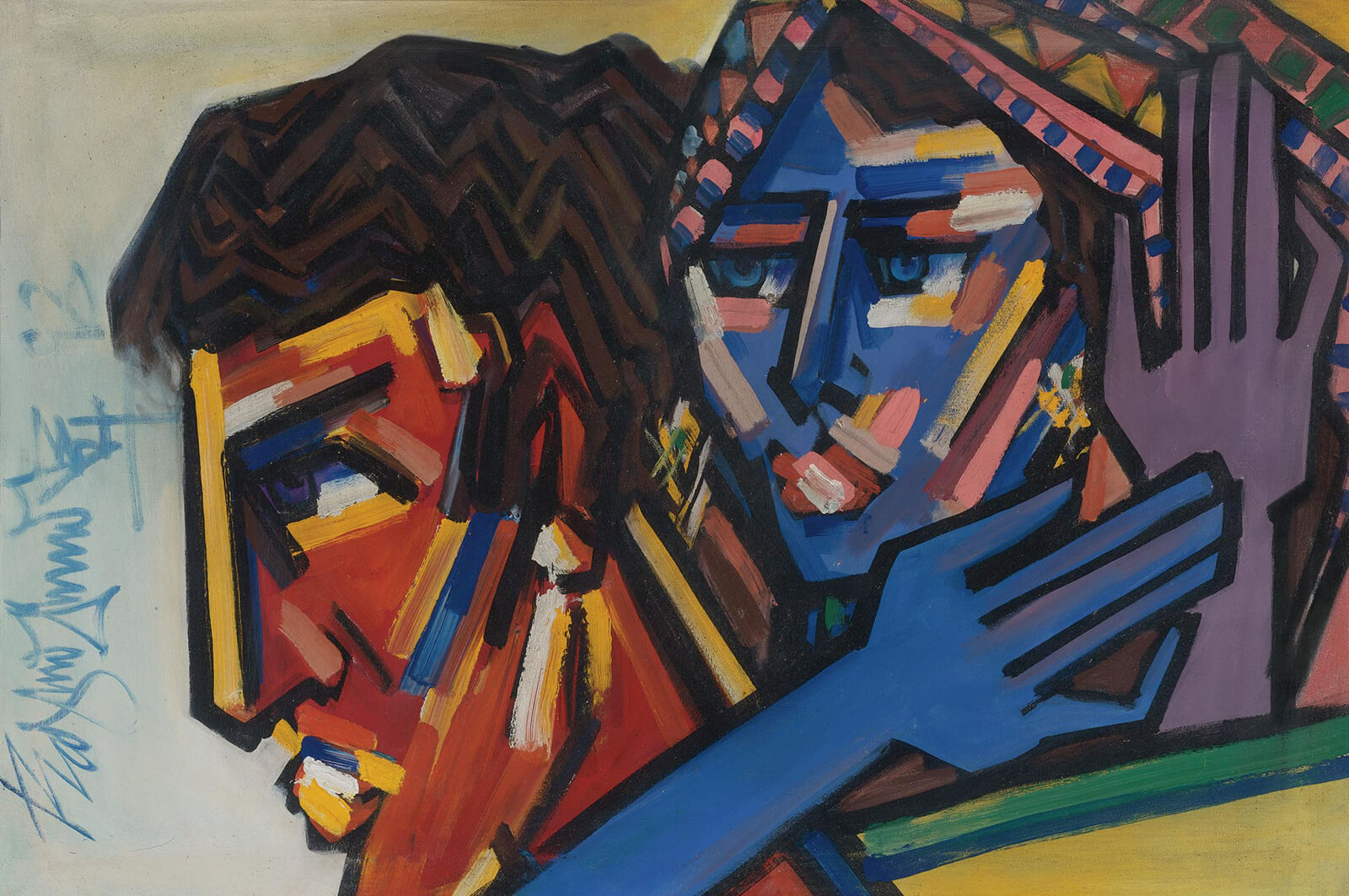
Zahoor ul Akhlaq (1941-1999)
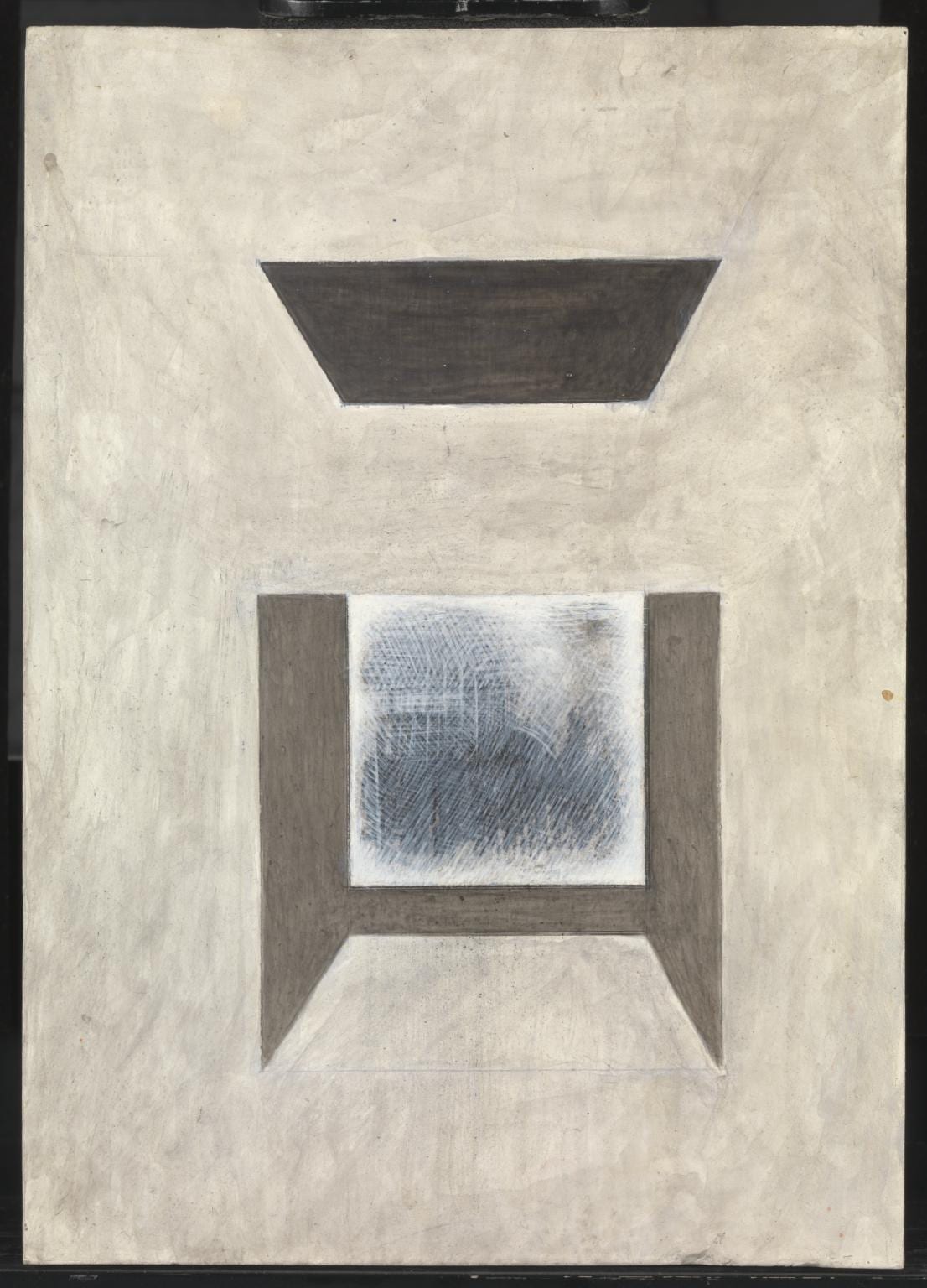
Zahoor ul Akhlaq (1941-1999) single-handedly changed the course of modern and contemporary art in Pakistan. While teaching and serving as the Head of Fine Arts at the National College of Arts (NCA) in Lahore in the ’80s, Akhlaq revamped the program for teaching fine arts, and particularly miniature art. He challenged his students to get out of their comfort zones and push the boundaries, analyze and deconstruct imagery and to be subversive in their art practice, which led to the development of a talented and young group of artists that took the global art scene by storm and are largely credited for the revival of miniature art. These included globally acclaimed and highly sort after artists like Shahzia Sikander, Rashid Rana, Imran Qureshi, Saira Wasim, Ambreen Butt, Tazeen Qayyum and Waseem Ahmed to name a few.
Akhlaq was also a student at the NCA as well as the Hornsey College of Art and the Royal College of Art in London, and post-doctoral studies at Yale on a Fulbright Scholarship. It is hard to pin down Akhlaq’s work and categorize it as post-modern. Although it was produced at a time when the world was not as global and the “East” and “West” dichotomy was more entrenched, he chose to experiment in abstract expressionism and minimalism, while fusing with and deconstructing traditional Indian and Persian miniature paintings. His “Farman” series uses the grid and manuscript as base to introduces political and social commentaries, such as the nuclear weapons race in the ’90s between India and Pakistan while people suffered on both sides. From 1992-1998, Akhlaq lived in Toronto and taught at Ontario College of Art and Design (OCAD).
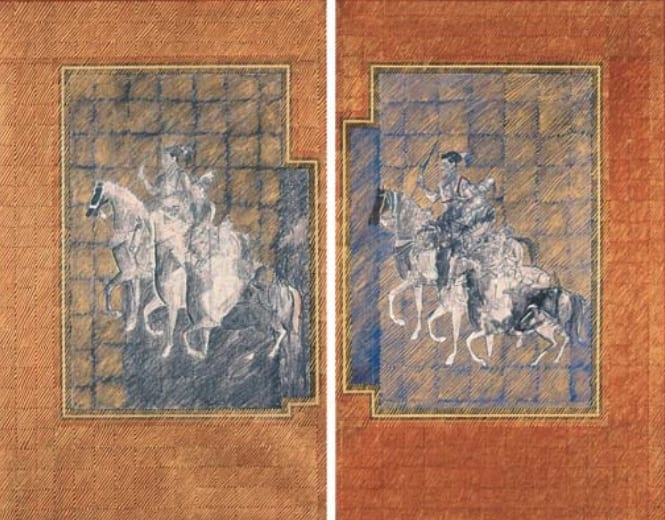
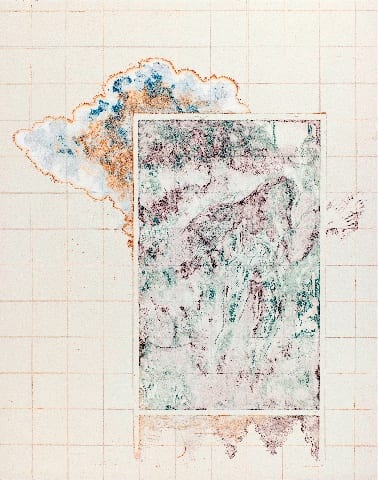
Ali Adil Khan has also served on the advisory boards of the Ontario Arts Council, Canadian Community Arts Initiative and the Art Gallery of Mississauga. He has been profiled in The Toronto Star, Hamilton Spectator, Calgary Herald, Mississauga News and Desi News. He can be reached at [email protected] or 647-505-4658
Ali Adil Khan
Author
Ali Adil Khan (@ali.a.khan) is the founder of the South Asian Gallery of Art & director of the SAGA Foundation in Toronto. He's an art critic, curator, writer & collector. He has curated exhibitions in Canada & served as an advisor to various museums including the ROM & Aga Khan Muse...


















































